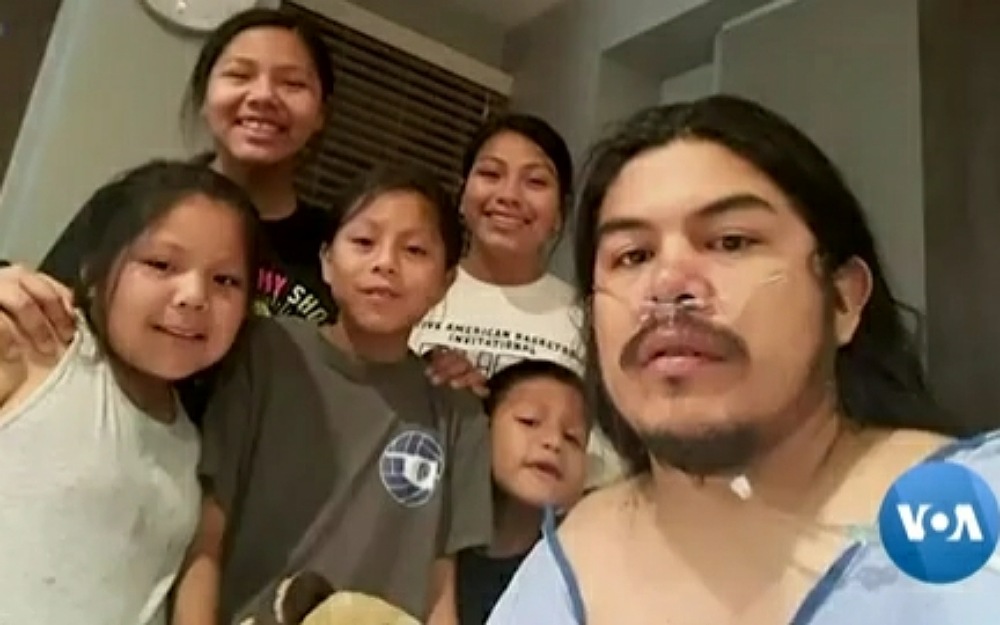The 2019 Atlantic hurricane season is officially underway, yet many people haven’t recovered from some of last year’s storms. Meantime, tornados have torn up swaths of several U.S. states in the past few weeks, and floodwaters have wreaked even more damage.
Across the U.S. and elsewhere, tornados, flooding and fires have destroyed homes, sometimes entire communities. Victim after victim describes the trauma.
Preston Black in Oklahoma says a tornado threw his trailer home several meters into the air. His parents, wife and children were all inside. Then, he saw his wife in the debris.
“To see her like that. … It was awful,” he said. “The worst thing I could ever see.”
She survived. But they lost everything they had.
Hurricane Michael

Last October, Hurricane Michael destroyed entire towns in Florida. Some people are still living in tents. Janelle Crosby lives in a trailer home full of health hazards.
“Rats. Critters. It’s disgusting. Mold. This they put up to try to contain the mold. It was pink, it’s now black.”
Natural disasters affect everyone differently. In California, Gwen Oesch found that the immediate impact of loss can’t always be anticipated.
“I didn’t realize how much my home means to me,” she said, with a sigh.
Solace in numbers
When a community is hit by a disaster, it can be less traumatic than an individual disaster like an accident, according to Dr. John Lauriello, a psychiatrist at the University of Missouri Health Care.
“I think there’s a shared understanding of the trauma, which I think can be very, very helpful because people feel like it wasn’t just them. It occurred to their community and, therefore, the community is going to work together, and the rebuilding will happen together.”
In Missouri, universities are housing people whose homes were destroyed by massive flooding and a tornado. Darrell Bonner says he’s grateful for a place to stay.
“It’s a blessing living here. A lot of financial burden has been let loose a little bit. There’s hope. There are people out there willing to help,” he said.
Crosby says in her Florida community, people share whatever they have.
“We just all take care of each other. It’s hard, but like I said earlier, if one of us has generator gas, or if we have propane, we all get to cook that night. If not, we get out here and make fires on the grill and cook.”
For children, routine key
Psychiatrist Laine Young-Walker at the University of Missouri Health Care says the sooner parents can get their children back into a normal routine, the better off they will be.
“They thrive in and survive on structure and routine,” Young-Walker said. “So when a natural disaster like this happens and they get displaced, they’re not in their home anymore, their school is closed, they’re not able to go to the school. They don’t have that structure. They don’t have that routine and that consistency. And it can cause a lot of stress for them.”
If schools are destroyed, Young-Walker suggests finding ways to do class work.
Last year, a teacher turned her California home into a classroom when her students’ school was destroyed by fire. Eight-year-old Eleanor Weddig thought it was better than school.
“I love it. It’s like more comfortable than our classroom, the chairs are cushy, that’s one thing that I like. And anyway it’s a house so it’s, like, more fancy and stuff and she cooks us great lunches. Like every lunch I love,” Eleanor said.
Californian Gwen Oesch credits community support with helping people who had lost their homes during the wildfires.
“It’s almost like a therapy thing, you know?” she said. “We’re all in the same place, and dealing with the same thing. We’re talking about the people who lost their homes and how sad it is. But, you know what? We’re resilient.”~VOA














